Symptoms of stomach pain. Common diseases: stomach symptoms. Features of pain in peptic ulcer disease.
“There are thousands of diseases.
But there is only one health."
L. Berne
A person remembers this when painful spasms and colic in the body begin to bother him. Sometimes the pains are so strong that they make you bend in half and think with horror that these are the last minutes of your life. We're talking about stomach pain.
Pain syndrome with problems in the stomach is called "gastralgia". He worries in the area of the peritoneum under the left rib. That's where the stomach is.
Stomach pains are sharp, stabbing, pulling, constant. They pile on a person with painful attacks or disturb for a long time. Before a qualified medical examination, it is impossible to say exactly why the stomach hurts - because next to them are the ureters, gastrointestinal tract, spleen and spine. And any neighboring organ can cause pain in this area.
Common Causes of Pain
Most often, gastralgia does not indicate the presence or development of a dangerous disease. It is called for domestic reasons.
| Cause | Type of pain, symptoms | What to do |
| Illiterate nutrition | If you eat “on the go” (once a day), hastily snacking in between, the stomach reacts with cramps (hunger pains). After eating, they turn into sharp ones. Pain occurs from coffee drunk on an empty stomach (caffeine, catechols, which are part of the coffee composition, irritate the walls of the mucous membrane, causing gastralgia) | Establish proper nutrition, eat small portions 5-6 times a day, and it is better to snack on fruits or vegetables. For stomach discomfort, drink a glass of warm milk. It is especially helpful during pregnancy |
| Binge eating | Stomach pain and nausea. There is a feeling of heaviness. Constipation occurs, the muscles of the peritoneum are tense and stretched. There is girdle pain in the stomach of a aching character | Discomfort is relieved by massaging in circular motions. It is recommended to spend a fasting day so that the digestive tract normalizes. Mezima tablet also helps to restore well-being - medicinal enzymes will help digest food faster |
| Stress | Spasmodic neurogenic pains appear after severe nervous fatigue. The person is restless, nauseous. If the situations are repeated, they provoke the development of gastritis and ulcers. | A consultation with a gastroenterologist and a course of treatment by a psychotherapist will help. The specialist will teach you how to deal with stress on your own. The nerves put in order normalize the microflora of the stomach |
| Medicines | Some drugs cause drug-induced gastritis - a condition in which taking another dose of drugs causes spasmodic gastralgia and heartburn | Take medication only as directed by your doctor! If you cannot do without certain means, switch to the capsule form of medicines in order to prevent irritation of the mucous membrane of the organ |
| Intoxication | Sharp, shooting, nausea occurs, sweating profusely, weakness. Symptoms depend on the specific substance that caused the poisoning. The first signs appear after 1-2 hours in the form of acute diarrhea and fever | If these symptoms appear, you should immediately consult a doctor. To relieve pain before visiting a doctor, take sorbents (activated carbon, polysorb, enterosgel) and antispasmodics (no-shpa, spasmalgon). Try to drink often and a lot |
| Allergy | Many people are lactose intolerant, which is part of dairy products. In response to the ingestion of lactose into the stomach, the organ reacts with acute pain, the stomach swells. An allergic reaction is accompanied by diarrhea, human anxiety, nausea, vomiting | Before contacting a doctor, take antihistamine(loratadine, zyrtec, telfast) and carry out activities similar to conventional stomach poisoning |
The situation becomes much more dangerous when gastralgia develops and becomes an accompanying symptom of a dangerous pathology, which a person may not even be aware of.
Stomach diseases
According to statistics, 90% of the population suffer from various diseases of the stomach. Constant stress, illiterate nutrition, careless attitude to one's own health turn into gastric pathologies. Diseases of the stomach manifest themselves in three main signs:
- Pain in the epigastric region of the abdomen (upper peritoneum).
- Gastric discomfort, expressed in aching, pulling sensation.
- Dyspeptic disorders (constipation, heaviness in the abdomen, nausea, belching, heartburn).
Painful impulses often occur at night, after eating or on an "empty stomach". Gastralgia subsides after taking soda, milk, applying a heat compress. The most common stomach diseases are:
Gastritis
Inflammatory process of the gastric mucosa, the most common ailment of the gastrointestinal tract. According to statistics, up to 90% of older people suffer from gastritis. According to the course of the disease, doctors classify gastritis into acute and chronic.
The acute form of the disease occurs against the background of increased production of hydrochloric acid and gastric juice. Often this form of the disease becomes chronic.
At chronic gastritis the inflammatory process develops and affects the deep layers of the gastric walls. A characteristic feature of the chronic stage disease is the growth connective tissue in the mucosa of the organ.
Abnormal tissue over time replaces normal cells that produce gastric juice, causing atrophy of the organ. Chronic stage disease causes stomach cancer or transforms into an ulcer.
Causes. Most often, the destruction and inflammation of the gastric mucosa is caused by a bacterium Helicobacter pylori(helicobacteriosis). This microorganism is able to doze peacefully in human body without being active. It is awakened by provoking factors:
- food allergy.
- Hormonal disorders.
- Strong drop in immunity.
- Problems with metabolism.
- Intoxication of the stomach with alcohol.
- Regular intake of salty, spicy foods.
- Illiterate diet (food "hurriedly", dry food).
- Burn of the gastric mucosa with chemicals.
- Thermal damage to the organ due to too hot / cold food.
- Long-term use of anti-inflammatory drugs (aspirin, ibuprofen, diclofenac).
Gastritis is also able to develop due to the aggression of its own immune system directed at the cells of the gastric mucosa. This disease is called "autoimmune gastritis". Heredity plays a big role in its appearance.
When the mucous tissue is irritated, the body releases special substances that collect cells of the immune system to the site of the lesion. Deployed in one place, immune cells are active in the form of an inflammatory reaction.
Characteristics of gastralgia. Stomach pain is the main symptom of gastritis. The pain syndrome has such specific manifestations that immediately indicates a pathology. Its features:
- The pain syndrome manifests itself either in the morning on an empty stomach, or immediately after eating.
- Gastralgia of a compressive nature, is deployed in the central region under the sternum. She gives back.
in the acute phase. The pain caused by erosions of the mucosa is strong, unbearable. It is so bright that it takes the breath away from patients, especially if you press on the painful area.
With chronic gastritis. Gastralgia barely pronounced. Basically, the painful syndrome manifests itself during attacks or after a violation of the prescribed diet. But, in case of accompanying the chronic form of the disease with infectious diseases, gastralgia increases. The pain impulse appears immediately after eating and signals itself first with heaviness, and then with dull, aching pain.
Symptoms. There are cases when gastritis develops without symptoms (especially chronic). But, with the spread of the inflammatory focus, the pathology makes itself felt (in addition to gastralgia) with the following general manifestations:
- Weakness, tachycardia.
- Rumbling in the abdomen.
- Constant sour belching.
- Nausea causing vomiting.
- Violation of the gastrointestinal tract (diarrhea, constipation).
- The appearance of a grayish coating on the tongue.
- Dryness or profuse salivation.
Such symptoms manifest themselves depending on the manifestation of the pathology and the therapy. With the development of erosion, tarry thick stools and the manifestation of bloody streaks in the vomit are possible.
What to treat. Therapy of pathology is reduced to the elimination of the main culprit of the disease (infectious diseases, illiterate menu), the regeneration of the functioning of the mucosa and the prevention of the disease. The gastroenterologist develops complex measures on an individual basis. They include:
- Diet.
- Drug therapy.
- Preventive measures.
During attacks, they refuse to eat until the walls of the mucosa are regenerated and all accompanying symptoms go away. At this time, patients are only allowed to drink weak tea or mineral water. Then food intake is gradually resumed, with a strict, sparing diet.
A necessary condition for the complete elimination of the disease is the refusal or reduction of caffeine, alcohol, spicy foods. Do not use medications that cause heartburn (they are replaced with more suitable medications). An important step in the treatment of gastritis is medical nutrition(fractional meals 5-6 times and following the diet developed by the doctor).
If necessary, medical therapy is prescribed drugs that reduce acidity, antiviral drugs, agents that regenerate the gastric mucosa and antispasmodics.
Subject to all medical prescriptions, the disease disappears within a week, but the stomach itself recovers in 3-4 months.
Dyspepsia
A complex of functional disorders of the digestive system, affecting the stomach. Dyspepsia (indigestion or nervous stomach) is characteristic of many pathologies or is a separate disease. The disease is the most common diagnosis of gastrointestinal problems, affecting all major organs (stomach, pancreas, digestive tract). According to statistics, more than ¼ of the population suffers from this disorder.
Reasons for appearance. The appearance of the disease has two main reasons:
- Wrong nutrition. In this case, dyspepsia is the result of a poor, unbalanced diet.
- Lack of digestive enzymes. Pathology here acts as a concomitant symptom of another ailment.
Among the concomitant culprits for the development of the disease, the following are noted:
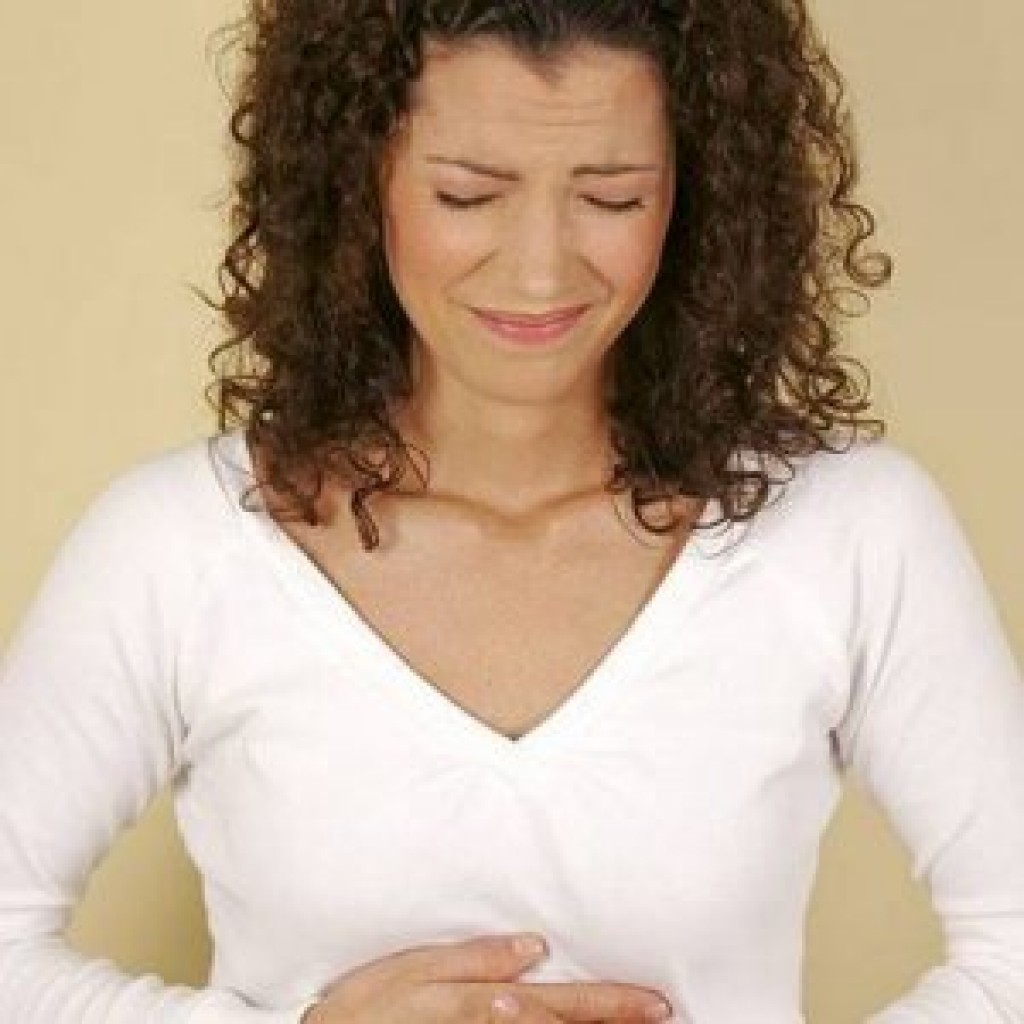
Dyspepsia often accompanies many diseases of the gastrointestinal tract (pancreatitis, tumors, cholecystitis, gastroesophageal reflux disease). Children of all ages also suffer from this disease:
- Up to a year. The cause of dyspepsia is too early introduction of complementary foods or overfeeding.
- Teenager. With a transitional age, the hormonal background changes and the rapid development of the body is noted, which affects the development of pathology. The situation is aggravated by the love of soda, chips and fast food.
The culprits of the disease include prolonged consumption of one group of foods. Dyspepsia has different types(depending on food):
Fermentation. It provokes the appearance of the disease for a long time eating foods high in carbohydrates. These include: legumes, flour products, fruits, honey, peas, cabbage. Also products obtained by fermentation (kvass, pickled vegetables, mash). Such products, regularly entering the stomach, lead to the appearance of fermentative microflora there.
Putrid. The culprit of the disease of this species is the constant eating of food of protein origin. This applies to sausages and red meat (beef, lamb and pork). The abuse of such products creates favorable conditions in the stomach for the occurrence of putrefactive microflora.
Soapy or greasy. Pathology develops due to long-term consumption of fats (sheep or pig fat).
The nature of the pain. The disease passes with the manifestation of unpleasant discomfort in the stomach, but it is difficult to call such sensations pain. Pathology manifests itself by swelling and hardening of the stomach (even in a hungry state) and a constant feeling of fullness. Rarely, but there are pain in the area of the upper part of the peritoneum.
Symptoms. Symptoms of the disease are varied and depend on the type of pathology. There are also general signs of the disease: a feeling of unpleasant discomfort in the stomach, feelings of fullness in it and constant heaviness. There are cases of belching with air and burning behind the sternum.
Enzymatic dyspepsia goes away with the following symptoms:
- Migraine.
- Flatulence.
- Nausea.
- Deterioration of well-being.
- Rumbling and gurgling in the abdomen.
- Loose stools with remnants of undigested food.
- Sensation of an unpleasant sour taste in the mouth.
Putrid dyspepsia in its manifestations is similar to poisoning and passes with the following manifestations:
- Weakness of the body.
- Headache.
- Severe nausea, vomiting.
- Temperature rise.
- The stool is liquid, dark in color with a pungent odor.
Fermentative dyspepsia declares itself with the following symptoms:
- Belching.
- Flatulence of the intestines.
- Strong flatulence.
- Heaviness in the abdomen, feeling of fullness.
- Pain in the stomach 20-30 minutes after eating.
- Foamy, colorless stools with an unpleasant sour smell.
In infants of the infant period, the disease manifests itself frequently (from 6-7 times per day) liquid stool. Feces are greenish in color, flaky. The kid is capricious and irritable, eats poorly and hardly sleeps because his stomach hurts at night.
Treatment. In the treatment of a pathological condition, special attention is paid to the development of a balanced diet, which begins with a "hungry" pause (1-1.5 days). Only then gradually the body learns to eat normally again. The food culprit of the disease is excluded from the diet.
Be sure to monitor the consumption of water - its amount should vary by 1.5-2 liters daily.
With enzymatic dyspepsia, the concomitant disease is first cured. Insufficient production of enzymes is corrected by special drug replacement therapy.
Chronic gastroduodenitis
Inflammatory process duodenum(duodenitis), which also affects the gastric mucosa (gastritis). The disease is characterized by alternating periods of remission and a sharp exacerbation. With the disease, all digestive motility is disturbed, the passage of food through the gastrointestinal tract becomes difficult.
The acute form of the disease occurs due to advanced gastritis. Very often, pathology develops into a chronic, dangerous and fraught with consequences.
In pathology, a strong deterioration is added to disorders in the digestive area. general condition and dysfunction of the autonomic system. After all, the duodenum is actively involved in the creation of hormones important for the normal functioning of the body.
Reasons for appearance. The disease does not occur suddenly and suddenly. Gastroduodenitis is a multifactorial disease, which has many causes:
- Hormonal disorders.
- Pathology of the endocrine system.
- Strengthening the formation of acidic juice.
- The activity of the bacterium Helicobacter pylori.
- Passion for spicy food (especially if it has been chemically processed).
Most often, pathology develops in older people, due to accumulated problems in the body and a long-term wrong lifestyle. The disease manifests itself as a result of past infections of the liver, pancreas and gallbladder.
The nature of gastralgia. The disease signals an acute, piercing pain syndrome in the peritoneum under the ribs. The pain is long lasting. Attacks increase during the off-season.
Symptoms. The disease is complex and dangerous. Chronic gastroduodenitis is characterized by the following symptoms:
- Paleness of the skin.
- Sour burp.
- Paroxysmal pains.
- Semi-conscious state.
- Nausea leading to vomiting.
- Upset stomach or constipation.
- An unpleasant putrid odor from the mouth.
The symptomatology of the pathology is similar to a number of other infectious and inflammatory diseases. An accurate diagnosis is based on the results of a thorough medical examination.
Treatment. After diagnosing and identifying the disease, a therapy plan is developed, which includes the strictest diet. The patient is strictly forbidden to eat fatty, smoked and sweet foods. The menu is based on cereals, boiled lean meat, soups and dairy products. The food is fractional (5-6 times in small portions). Such a diet will reanimate the condition of the affected stomach and intestines.
If the disease is accompanied by high acidity, the patient is prescribed a course of antacids (tablets for stomach pain, treating acid-dependent diseases of the gastrointestinal tract). The doctor may include antiviral drugs in drug therapy. A course of taking vitamins B is mandatory.
Ulcer
Known to many, a stomach ulcer is a pathological change in the inflammatory nature of the mucous walls of the organ. In case of illness, the mucous membrane of the organ is corroded by gastric juice, forming a defective abnormal formation - an ulcer. This is a chronic disease, more often diagnosed in men 25-55 years old. Ulcerative pathology is a dangerous condition, leading to serious complications. The disease can provoke:
penetration. Destruction of the wall of the stomach, as a result of which the ulcer affects the organ located under the site of the lesion. Most often this concerns the pancreas, but the lesion can also affect the gallbladder, liver, intestines. Sharp, piercing pains testify to the development of complications. They are permanent and have a girdle character.
perforation. A condition in which, due to the destruction of the gastric membrane, the contents of the organ are in the abdominal cavity. Provokes a dangerous state physical exercise, alcohol abuse or spicy food. There is severe pain, so powerful that it provokes a painful shock. 10-12 hours after the attack, peritonitis (inflammation of the peritoneum) begins.
Bleeding. The most serious complication leading to a fatal outcome (in 25% of cases). The condition is accompanied by severe vomiting, vomit masses are similar in consistency to coffee grounds. The stool is tarry, becomes black in color, there is blood from anus. The patient's blood pressure drops sharply, tachycardia, sweating and shortness of breath appear. If you do not stop the attack, the person dies.
Malignancy. The degeneration of an ulcer into a cancerous form. This complication is observed very rarely (diagnosed in 2% of cases). In this case, a person loses weight very quickly, completely losing his appetite. Meat food causes the urge to vomit. As the tumor grows, hematemesis and fever begin. This complication often leads to death.
Reasons for appearance. The main culprit of the dangerous condition is the imbalance of protective gastric forces and the impact on the stomach of aggressive external factors. The mucus secreted by the gastric organ is unable to cope with incoming enzymes, and provokes the appearance of ulcers due to the concentration of hydrochloric acid.
In 80% of cases, the Helicobacter bacterium, which is able to adapt to the gastric environment and actively live there, contributes to the development of the disease. Because of its vital activity, the cells of the mucous membrane die, which leads to the appearance of an ulcerative area. 
The opinion that severe stress provokes an ulcer is not without truth. In prolonged stressful situations, the work of the neuropsychic system is tense, “wear and tear”. This leads to the development of muscle, vascular spasms, which destabilize the work of the stomach and provoke the appearance of an ulcer.
Other sources of the problem include:
- Prolonged use of aggressive medications that irritate the stomach (aspirin, diclofenac, ibuprofen, indomethacin). The risk increases after 60-65 years, when the forces of the organisms are already weakened.
- Existing ailments (hepatitis, tuberculosis, diabetes, liver cirrhosis, pancreatitis).
- Heredity.
- Injury to the stomach, shock conditions of the body (frostbite, large severe burns, sepsis).
The nature of the pain. When making a diagnosis, the doctor will thoroughly inquire about exactly where the pain is localized and how it manifests itself. With a stomach ulcer, the manifestations of gastralgia depend on the location of the ulcer:
Cardinal/subcardinal division. The pain impulse is weakly expressed, it occurs half an hour after eating. The pain is localized at the top of the organ and can be mistaken for a cardiac spasm. Often there is heartburn, severe belching, nausea and vomiting.
Small curvature. Gastralgia occurs in the epigastric region an hour and a half after eating. The painful syndrome goes away on its own after the cessation of the stomach. Gastralgia can suddenly return at night and after a long absence of food. Pain of a pulling nature, accompanied by nausea, vomiting is rare.
Big curvature. The pain syndrome is poorly expressed, which greatly complicates the diagnosis. Such ulcers are rare and often provoke the appearance of cancer.
Antral department. Gastralgia appears in the evenings and at night, it is accompanied by severe heartburn and sour belching. The pain syndrome is localized in the epigastric zone.
pyloric canal. The intensity is bright, the attack lasts up to 50 minutes. Pain syndrome does not depend on nutrition and appears at any time. Saliva becomes viscous, the condition is accompanied by constant heartburn.
Symptoms. Do not forget to conduct regular examinations, because the ulcer can not manifest itself in any way and develop asymptomatically (25% of cases). Pathology, identified at the first stage, in many cases is treated without surgical intervention. You can notice that trouble is happening with the body by the following signs:
- Pain. Pain impulses are localized in the upper abdomen, intensify after exertion, alcohol or spicy food.
- Heartburn. There is an unpleasant sensation when stomach acid enters the esophagus, irritating its mucosa. Heartburn with an ulcer occurs 1.5-2 hours after eating.
- Nausea. Nausea develops due to problems with gastric motility. Vomiting appears 2 hours after eating and brings relief.
- Decreased appetite. It has more to do with psychological problems. A person stops eating so as not to experience pain.
- Belching. It is bitter and sour. The culprit of the appearance is the gastric juice thrown into the oral cavity.
- Flatulence, feeling of heaviness. Discomfort occurs immediately after taking even a small amount of food.
- Chair disorder. With an ulcer, constipation often appears, and stool disorder is not characteristic of the disease. It is difficult to empty the intestines up to 50% of patients with an ulcer, this pathology is more pronounced during attacks.
- Increased sweating of the hands, gray-yellow coating on the tongue. Plaque formation always occurs with diseases of the gastrointestinal tract.
Treatment. To get rid of pathology, an integrated approach is used. The efforts of specialists are aimed at the complete removal of the Helicobacter bacterium from the patient's body (they use antibiotics). Then treatment with anti-ulcer drugs is directed to the normalization and reduction of acidity. During severe attacks, a person is hospitalized. Important attention is paid to the diet.
It is impossible to describe any specific therapy regimen - it is always individual. Treatment of an ulcer is a non-standard matter, depending on a large number of factors. Self-medication without consulting a gastroenterologist is not successful and is fraught with the development of serious complications.
Endophytic gastric cancer
With the development of endophytic cancer, a malignant neoplasm grows deep into the mucous membranes of the gastric walls and, in its manifestations, is similar to an ulcer. This tumor is called "ulcer-cancer". Malignant formation does not have clear, pronounced boundaries. Cancer cells quickly spread through the submucosal layer of the stomach, which is full of lymph nodes.
With the development of a tumor, the folds of the gastric mucosa straighten. Endophytic cancer is characterized by the absence of a precancerous condition, rapid tumor growth and active metastasis.
Causes. The specific causes that become the culprit for the development of a malignant tumor of the stomach have not been identified. But there are predisposing situations that are beneficial for the development of the disease:
bacterium Helicobacter. The activity of the microorganism provokes the development of many gastric pathologies. She also acts as a provocateur of development cancerous tumor. In the presence of Helicobacter in the body, the risk of cancer increases by 3 times.
Polyps. Benign growths of the gastric mucosa. Polyps are formed against the background of existing chronic diseases and in 30% of cases degenerate into a malignant tumor.
Chronic diseases. Atrophic gastritis is especially dangerous in terms of the appearance of cancer, passing with a decrease in the thickness of the mucosa and the development of insufficiency in the production of gastric secretion.
Heredity. If there are cases of stomach cancer in the family history, the risk of pathology in the rest of the family increases by 3 times.
Wrong nutrition. Especially excessive passion for fatty, spicy, canned and fried foods. Aggressive food destroys the walls of the mucosa, depriving the stomach of full protection. Carcinogenic substances penetrate into the damaged epithelial layer, provoking the degeneration of cells into cancerous ones.
How pain manifests itself. The pain impulse in a malignant tumor is subdivided according to the nature pain and time of appearance. Given the characteristics of the pain, it is possible to determine exactly where the cancer is supposed to develop:
- The earlier in time after eating pain occurs, the closer the tumor is localized to the esophagus.
- A malignant formation in the gastric fundus causes painful spasms 50-60 minutes after eating.
- With the defeat of the pylorus (sphincter separating the stomach and duodenum), gastralgia occurs after 2-2.5 hours.
Oncologists divide the pain syndrome of gastric cancer into primary (gastralgia appears with direct damage to the organ) and secondary (pain impulses come with the development of metastases). Secondary impulses appear in places of metastasis. Cancer gastralgia has the following features:
- The pain persists for a long time.
- They are not associated with a feeling of hunger (unlike ulcers).
- Painful impulses do not decrease after eating.
Cancer in the early stages does not have pain manifestations. Perceptible soreness is manifested only with the development of the tumor. A malignant neoplasm also has an atypical course - in which pain impulses are not observed at all.
Symptoms. Endophytic gastric cancer does not have a pronounced symptomatology. A number of specific features that prevail in oncological disease, doctors are divided into two groups:
Non specific:
- Weakness of the body.
- Decrease or lack of appetite.
- Depression (lethargy, loss of interest in life).
Specific (peculiar to diseases of the stomach):
- Nausea, vomiting. In the vomit there are parts of undigested food eaten by the patient 1-2 days before it. The vomit is similar in texture to coffee grounds.
- Stomachache. Dull, pulling, aching, it appears after eating, on the left side of the body under the ribs.
- Problems with the movement of food. The symptom manifests itself when the tumor metastasizes to the esophagus.
- Increased belching, heartburn, feeling of a full stomach, heaviness in it.
When the tumor passes into the last stages of development, an increase in the abdomen due to the fluid accumulated there is added to the general symptoms. Paleness of the mucous membranes and skin, their yellowing (at the last stage, the skin and mucous membranes become earthy). Increase lymph nodes in the region of the left collarbone, navel and armpit.
Treatment. Tumors of the stomach of an endophytic nature are difficult to diagnose and are often detected already in the later stages. The main method of treatment is surgical intervention with the removal of the affected area. When metastases affect neighboring organs, operations are also performed on them.
Stomach pain in children
Children's gastralgia is a symptom of a variety of ailments - mild or serious. The pain syndrome provokes the usual overeating, emotional overstrain or excessive stress on the abdominal muscles. Pain in the stomach area also provokes colic in children of physiological origin (the babies do not get sick and develop well). 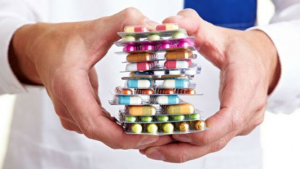
But, sometimes the pain impulse signals the development of a serious disease. You can guess why the child is suffering from the location of the pain syndrome (where it is located and how it hurts):
| Where does it hurt | Type of gastralgia | Symptoms | Peculiarities | Possible diagnosis |
| Upper abdomen (pit of the abdomen) | Bursting, sharp, aching | Frequent vomiting (soreness with vomiting increases and disappears after vomiting) | Starts after stress, eating sour/spicy foods | Ulcer, gastritis |
| Central region and upper abdomen | Girdle | Dry mouth, bad taste, high blood pressure and vomiting | After fatty, spicy food, the pain impulse gives to the lower back | pancreatitis |
| umbilical zone | Sudden, sharp, cramping and violent | General body weakness, chills, fever | After a hearty meal, chocolate | Intestinal colic |
| Center of the abdomen, moving to one side | Sharp, shooting | Frequent urge to urinate, pain extends to the lumbar region | After eating a lot of diuretic food (watermelon) | Renal colic |
| Lower abdomen, right | Initially, the pain impulse appears at the top of the abdomen, gradually decreases and covers the bottom | Nausea, fever, fever | There is no connection with the products, the pain occurs suddenly and subsides if the child lies on the left side of the body | Appendicitis |
| Whole abdomen | Pain is moderate and constant | Dry mouth, general weakness, nausea and fever | It does not go away on its own and is not amenable to stopping medicine | Peritonitis (inflammation of the peritoneum) |
| lower abdomen | Piercing, pulling and sharp | Weakness, high fever | After emotional shock, hypothermia | Inflammation of the urinary system |
With any manifestation of the painful syndrome of the child, it is necessary to immediately show the doctor to establish an accurate diagnosis and adequate treatment.
How to treat at home
What to take for stomach pain? In the home first aid kit and in the kitchen there are tools that can stop gastralgia and bring relief. But remember, such methods will only help temporarily eliminate the symptoms of diseases, but not the very cause! What to do at home?
Decoctions. Medicinal decoctions are made from herbs traditionally used by folk healers for stomach pains. These plants have a choleretic, bactericidal, digestive effect and act as antispasmodics:
- Mix the herbal mixture of dill, rosemary, sage (1 tsp each) and mint (2 tsp). Pour the herbal mass into boiling water (½ l) and cook for 5-6 minutes over medium heat. The container does not need to be covered. The liquid is filtered and drunk. The product is suitable for children (for children, sweeten the decoction with honey).
- Dried nettle (20 g) steamed with a glass of boiling water, cook for a quarter of an hour. Let the broth brew for an hour and a half. Take ¾ cup per day.
- Rinse half a glass of rice and pour water (0.5 l). Cook until a porridge-like mass is obtained. Drink ½ cup three times a day.
- Mix equal amounts of centaury, St. John's wort and cudweed. Herbal collection (60 g) brew with boiling water (200 ml). Boil for 5-10 minutes and take ½ cup a day. You can add natural honey.
- Yarrow (2 tablespoons) steamed with boiling water (½ l) and bring to a boil. Filter the mass and drink 100 ml three times a day.
Infusions. In addition to stopping gastralgia, tinctures from medicinal herbs and plants help to strengthen nervous system, improve mood and remove insomnia. Best Recipes:
- Fresh or dried dandelion flowers (2 tablespoons) pour boiling water (500 ml) and let it brew for 3-4 hours. Drink instead of the usual tea twice a day.
- Anise seeds (1 tablespoon) brew a glass of boiling water, let it brew for 2 hours, filter. Take 100 ml each time after meals, the course is 1.5 months.
- Turn the fresh dandelion inflorescences with a meat grinder (keep the juice that appears). Place the resulting mass in a glass container and pour a kilogram of sugar. Leave to insist. The product will be ready when the sugar is completely dissolved. Mix a tablespoon of the mass in water (100 ml) and drink 3 times daily.
- Grind dried valerian root and pour dry red wine (½ l) into it. Bring the mass to a boil and leave for 10 hours to infuse. Take 100 ml every evening for a month.
- We mix dry plants (calendula, coltsfoot) in equal proportions. Steam a tablespoon of the mixture with boiling water (400 ml) and leave to infuse for 5-6 hours. Take as regular tea.
With heartburn. When dealing with an unpleasant phenomenon, do not rush to grab medications. Heartburn can be easily cured with the help of the forces of nature. Effective Recipes:
- Crush anise seeds (glass) and pour vodka (0.5 l). Insist in the dark for a month, shaking regularly. Then strain the resulting infusion and stir in a pound of sugar, chopped lemon zest. Mix the mass until the sugar dissolves and take 2 tbsp. after meal.
- Pour bitter wormwood (1/3 tsp) with water (400 ml), leave for 2-3 days. Means to drink cold in small sips.
- The root of yellow gentian (20 g) is steamed with a glass of boiling water, insisted for half an hour, filtered. Drink a tablespoon half an hour before meals.
- Crushed walnuts are great for relieving heartburn. Eat them 1-2 tbsp. daily.
- Grind dry angelica (root, leaves or seeds). Grass (10 g) pour a glass of boiling water and leave for a quarter of an hour. Drink tincture three times a day for a tablespoon.
Prevention
All people have a chance to prevent stomach discomfort and avoid the development of dangerous diseases. The following simple preventive rules will help minimize the occurrence of problems:
- Don't overeat.
- Start the day with a full breakfast.
- Minimize alcohol and smoking intake.
- Monitor the quality of the food you eat.
- Take food in small portions and often (5-6 times).
- Refuse fast food, carbonated drinks and ready-made convenience foods.
- Reduce the amount of spicy, fatty, pickled and smoked foods in the diet.
List of the most useful foods for stomach health, depending on its condition:
| Healthy diet | Eating is prohibited | |
| Healthy stomach, in order to prevent | Whole grain bread, flax seeds milk. Vegetables, kefir, cottage cheese, porridge from oatmeal, oatmeal. Berries (strawberries, raspberries, gooseberries), avocados, bananas | |
| In diseases accompanied by high acidity | Kashi, mashed soups, kissels, bell peppers. Leafy vegetables, milk, lean meats. Legumes, lentils, nuts, fish. | Mushrooms, zucchini, cucumbers, cabbage. Dried apricots, chocolate, nuts. Cottage cheese, sunflower seeds, apricots, chocolate. Greens, cocoa |
| Diseases associated with low acidity | Carrot juice, rosehip broth, grapes. Apricots, cranberries, chocolate, meat. Turnips, beans, squash, zucchini, cucumbers. | Dairy products and milk, quince, cherry. Lingonberries, raspberries, currants, citrus fruits. Cabbage, muffin, yeast dough products |
| With an ulcer | Wheat bread croutons, not fancy biscuits. Steam omelettes, meat and vegetable broths, lean fish. Rosehip broth, pasta and cereals | Vegetable oil, mushrooms, sauerkraut, smoked meats and canned food. Lactic acid products, boiled eggs, corn, barley. Turnip, beans, peas. Sour berries (discard persimmons, currants, gooseberries) |
| With gastritis | Lean meats, whole milk, oatmeal. Potatoes, buckwheat, rice, sea fish. Zucchini, eggs, bananas and honey | Fresh bread, puff pastry, oily fish. Okroshka, kvass, black coffee. Spicy/salty cheeses, canned food and smoked meats |
| On an empty stomach (for breakfast) | Oatmeal, berries, nuts, cottage cheese | Freshly squeezed citrus juice, cold drinks, pears. Tomatoes, persimmon, pastries |
At the slightest pain in the stomach, be sure to consult a doctor. Self-medication is not able to remove the true cause of discomfort, and only a physician is able to understand what exactly is happening with the body. Take good care of your health! Timely consultation, prevention will help to avoid serious diseases and dangerous consequences.
Article content:
Pain in the stomach appears with different pathological conditions. Many of them are not treated at home. However, in some cases it is possible to effective treatment stomach folk remedies, after consulting with your doctor. Consider what alternative therapy will help you quickly get rid of stomach pain.
What causes abdominal pain
Our well-being and health are affected by the quantity and quality of the food we eat. We often do not think about the composition of what we eat, consume convenience foods and fast food. This is in many cases done in favor of the ubiquitous advertising. We snack quickly and on the go with bars, pie, soup from convenience foods, etc.
All this negatively affects the condition of our stomach. He succumbs to all sorts of diseases. And if you cure the main symptoms of gastritis, in particular, pain, you can proper treatment in a few weeks, the ulcer requires a long approach and often only “heals”.
Treating food poisoning at home
Treatment of severe poisoning with mushrooms, chemical poisons is carried out only in a hospital. However, at home, you can cure food poisoning causing stomach pain and nausea. It is necessary to start therapeutic measures in a timely manner so that as little as possible of the toxin can be absorbed into the blood.
Hospitalized in the following cases:
- poisoning in a child under three years old;
- poisoning in the elderly and pregnant women;
- poisoning with mushrooms, plants and chemicals;
- when poisoning is accompanied by pain in the abdomen;
- too frequent diarrhea, as well as an admixture of blood in the feces;
- growing weakness;
- heat.
Treatment of gastritis at home
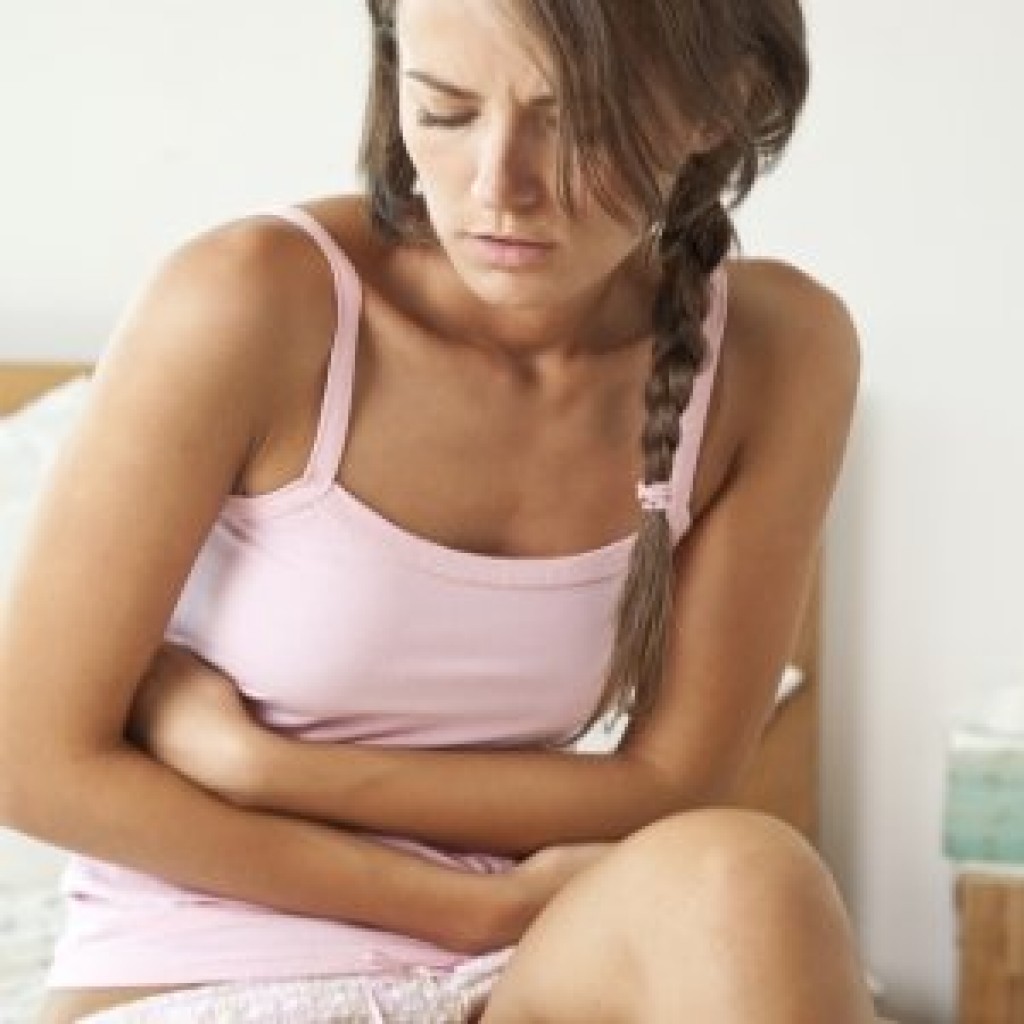 Almost everyone can help themselves in case of gastritis. In most cases, the treatment of this disease at home is associated with diet and the intake of decoctions of medicinal herbs.
Almost everyone can help themselves in case of gastritis. In most cases, the treatment of this disease at home is associated with diet and the intake of decoctions of medicinal herbs.
Acute pain can be relieved with medication. This should be done under the supervision of a doctor. In the absence of exacerbations, gastritis can be cured at home.
First of all, attention should be paid to balanced diet. It should contribute to the most rapid recovery of the gastric mucosa. It is highly recommended to exclude the following foods from the diet:
- fried foods;
- all smoked meats, pickles and marinades;
- carbonated water;
- alcoholic drinks;
- juices sold in packages;
- semi-finished products, sausages;
- sweet pastries;
- canned foods;
- dishes with flavorings and preservatives.
These are easy recommendations. If you feel that your stomach hurts, it means that irritation has increased. It is necessary to adjust the diet, eliminating too cold and hot dishes. In the early days, you need to eat only liquid cereals, mashed foods that do not injure the mucous membrane. Fatty and rich broths, as well as fatty meat, are completely excluded.
Juices are very useful
If the stomach hurts with low acidity, you can drink pineapple, raspberry, cherry juice. Pain in the stomach with high acidity can be removed with carrot, cabbage, apple juice with the addition of aloe juice.
If you have a stomach ache, you can try effective remedy at home - a decoction of flax seeds. It well envelops the mucous membrane, which allows you to effectively relieve pain. In addition, such an infusion well corrects the acidity of gastric juice.
With gastritis, it is good to drink:
- decoction of licorice root,
- water with honey
- decoction of sea buckthorn berries.
There are many folk remedies for the treatment of gastritis, and each of them shows its effectiveness. However, before taking treatment at home, consult your doctor.
If you have an ulcer
 An ulcer is constant discomfort and pain. There are many folk remedies that, if not able to cure a stomach or duodenal ulcer, can help relieve pain, heartburn and discomfort.
An ulcer is constant discomfort and pain. There are many folk remedies that, if not able to cure a stomach or duodenal ulcer, can help relieve pain, heartburn and discomfort.
It is necessary to treat such a disease immediately after its occurrence. This is due to the fact that it can develop into cancer. The ulcer hurts a lot, and this pain in the stomach is exacerbated by alcohol, smoking, nervous stress.
There are many recipes for treating stomach ulcers. You can make decoctions, infusions of herbs and foods to relieve pain and treat ulcers.
Recipes for ulcers
Here are some folk remedies that can be used to treat an ulcer.
- If you have a stomach ache, it is good to drink freshly squeezed cabbage juice for six weeks. Each time you need to make one glass of such juice, drink 4 times a day for a glass.
- A glass of hot water on an empty stomach also helps. It takes a very long time to treat an ulcer in this way - up to six months.
- Buttered kefir is a simple, inexpensive, and very effective ulcer treatment.
- Good clay helps with stomach ulcers. It must be diluted with water (one part clay to 10 parts water). This solution is drunk for three weeks, and then you need to take a break for 10 days. The course of such treatment is one year.
- Shilajit is a highly effective medicine for treating stomach ulcers. The cure for an ulcer is made simply: 150 g of mint is taken and 5 g of mummy is dissolved in it. It is taken in a tablespoon in the morning and at night. It is necessary to treat an ulcer in this way for up to 15 days.
Treatment with honey
Treatment of stomach and duodenal ulcers with honey is also effective. There are many recipes to help get rid of stomach ulcers with delicious honey drinks. Here are a few of them:
- The simplest remedy for ulcers is water with honey. This drink is taken at night.
- Honey can be taken on an empty stomach, a tablespoon. It is an excellent and delicious pain reliever.
- At home, you can make a mixture of butter, cocoa and two eggs with honey (50 g). It is taken in three tablespoons 4 times a day.
- The juice of two lemons is mixed with honey (500 g). The same amount of olive oil is added to this mixture. It should be taken one tablespoon three times a day.
- Mixed 6 g of orange peels, licorice root, 100 g of water with honey (about 60 g of honey). For the day you need to eat the entire portion, three times. The course of such treatment is one month.
- Honey treatment is carried out in another way: a glass of water is drunk, after 2 minutes a tablespoon of honey is eaten, and then, after the same time, a tablespoon of butter. The course of treatment is 10 days, then the same number of days off. So it is necessary to treat the ulcer until the pain in the stomach is completely relieved.
This treatment is an excellent way to eliminate stomach pain and ulcer scarring.
Agave treatment
 Stomach ulcers can be treated with agave (aloe). Honey is also combined with this plant.
Stomach ulcers can be treated with agave (aloe). Honey is also combined with this plant.
The healing properties of aloe have been known since time immemorial. Aloe has excellent restorative properties:
- heals the mucous membrane of the epithelium;
- helps to eliminate pain;
- normalizes the amount of hydrochloric acid in gastric juice.
To treat an ulcer, you need to take 250 g of aloe, mix it with honey (also 250 g). Aloe leaves must first be crushed. Butter and vodka are added to the mixture. This mixture is brought to a boil. Take aloe in a tablespoon three times a day.
Aloe treatment - effective method get rid of the ulcer that causes pain.
What not to do at home with stomach pain
If your stomach hurts, while the temperature rises, you feel chills, weakness increases, you can not self-medicate. These may be signs of an "acute abdomen", which threatens the patient's life.
- give the patient laxatives, painkillers;
- wash the stomach;
- put enemas, heating pads;
- give food, drink;
- give alcohol.
In this condition, you need to call an ambulance. Before the arrival of the ambulance, put a cold on the stomach. The patient needs rest, lying position. Sometimes he tries to relieve the pain in the stomach by the “embryo” position, that is, on his side, with his legs pulled up and his neck bent down.
Proper treatment of abdominal pain is the key to a successful recovery.
The most common type of ailment is when the stomach hurts. Almost everyone has experienced this condition. Getting back to good health is sometimes difficult. It is important to know the causes of the disease, and it will be easier to deal with it.
The nature and strength, prevalence and frequency of recurrence of pain in the stomach vary. Some experience dull or sharp pain, others suffer cramps, others experience slight discomfort, and others have constant stomach pains. Nausea and vomiting often accompany these manifestations. The doctor or paramedics of the ambulance will help to understand the situation.
1 Sources of ailment
Why does my stomach hurt? This question is asked by both young and older people. Often doctors use a specific concept ", which determines the nature of pain not only in the stomach. In the gastrointestinal tract and the peritoneal cavity there is a mass of systems and organs:
- Stomach.
- Liver.
- Intestines.
- Gallbladder.
- Pancreatic gland.
A disorder in each of them can cause pain in the abdomen or directly in the stomach. But the symptoms of all manifestations are different:
- Burning.
- Bursting.
- Pulsation.
- It's a dull pain.
- Cramping pain (she then lets go, then reappears).
- Severe numbing pain.
- When it hurts a lot, up to loss of consciousness.
Sources of malaise can be not only organs that are directly related to the digestion of food and the work of the gastrointestinal tract as a whole. Sometimes the stomach experiences discomfort from improper operation of neighboring systems. Nearby are the kidneys, lungs, uterus, ovaries.
Often, if, the reason lies in the disease of this particular organ. Cramping pains that occur when the digestive system malfunctions, doctors refer to as gastralgia. Nervous disorders are also the cause of this disease. It is known that in the stomach there is a mass of nerve endings.
If a person suffers from gastritis, especially in chronic form, the pain he experiences is not acute, but the attacks are often repeated. Some patients do not even notice such manifestations over time.
A stomach ulcer manifests itself much brighter. The pain does not subside, and what to do when it hurts so much, the patient often does not know. You need to call an ambulance and go to the hospital. Not only an ulcer can lead to such trouble. Pain is caused by a developing tumor of any type.
2 What causes discomfort?
If the stomach is sick, it is worth remembering and paying attention to the accompanying conditions. Pain can make itself felt immediately after eating. When a person notices discomfort after eating, doctors are more likely to suspect gastritis. This is how the stomach reacts to hard food. For example, fried rough meat, plant foods, canned food.
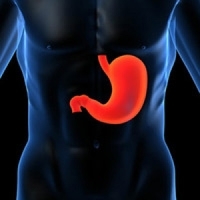
Where is the stomach and how does it hurt? Why is there discomfort in this area? Now let's take a look at these issues. Stomach pain bothered almost everyone. These sensations can be caused by a slight malaise and do not always indicate that a serious illness is present in the human body. One of the causes of discomfort in the human body is that he drank a lot of liquid or ate a lot of food. By where the stomach hurts, you can also determine the disease. But do not pay attention to pain is not worth it. Since they can say that some kind of disease develops in the body, which requires timely treatment. Below will be considered various options unpleasant sensations. If a person learns to distinguish which pain refers to what, then he will not miss the moment of contacting a medical institution.
What processes can cause discomfort? Where does the stomach hurt?
The reasons for which there is discomfort in the stomach may be physiological or pathological. It happens that the pain is present for a certain period of time, and then goes away. Where the stomach hurts is also a determining indicator.
A person is relieved, and he continues to ignore such unpleasant sensations. This behavior is erroneous. Since this type of pain may indicate that there is a serious disease in the human body that needs to be treated urgently.
Gastritis
What pathological processes can cause stomach pain? For example, it could be gastritis. Where does the stomach hurt with gastritis? This disease is characterized by the fact that its walls become inflamed. With gastritis, the pain is intermittent. It occurs after a person has eaten foods that irritate the inflamed walls of the stomach. If gastritis occurs in acute form, then immediately after the patient has eaten a food product that he cannot eat, there are sharp pains in the epigastric region. This discomfort passes quickly. But it resumes after the next consumption of those foods that cause irritation. When gastritis is chronic, the person does not experience sharp pains. In this case, the discomfort is aching in nature. There is also a feeling of fullness and swelling.
Dyspepsia
Another cause of discomfort is dyspepsia. In this case, where does the person's stomach hurt? This disease has another name, namely, a nervous stomach. Pain in this pathology is spastic. In addition, the person begins to feel sick. He also does not want to eat, and there is a feeling that the stomach is full. The pain syndrome is in the stomach area. But in fact, the cause of its occurrence comes from the pancreas. Therefore, taking painkillers does not have any effect. desired effect. Pain continues to disturb the person.
Ulcer
Now let's look at the symptoms. Where does it hurt with this disease? A stomach ulcer is the next stage in the development of gastritis in the human body. If the last ailment was not treated properly, then the patient begins to form an ulcer. Where does it hurt with a stomach ulcer? Since this disease is a consequence of gastritis, this suggests that a person is already accustomed to constant discomfort. Therefore, he may not pay attention to the new ones. It is worth saying that the pain of an ulcer is more severe. They occur immediately after food enters the stomach. A person should pay attention to the sharpness of pain. In this case, it is recommended to consult a doctor for qualified help as soon as possible.
Benign tumors and polyps
With such pathologies, pain in the stomach can also occur, where it hurts specifically, it will be said later. These formations in the stomach do not pose any danger to the patient's life. However, they cause quite uncomfortable sensations. Pain comes when food enters the stomach and comes into contact with neoplasms, causing them to become irritated. Also, when a person has eaten too much food, discomfort in the stomach begins to bother him. With this type of pathology, the pain has a aching character. Also, the patient has a feeling of fullness in the abdomen. Moreover, such a feeling is present even if the patient ate a little food. Discomfort disappears after a short time and ceases to disturb the patient. Since in this case pain sensations appear immediately after eating, a person has a fear of eating food, and he begins to avoid eating.
Other pathologies. Where does the stomach hurt? Symptoms
In addition to the above causes of pain in the stomach, there are a number of other causes that are associated with the physiological processes of the body. Medicine refers to this category of pathology of organs and systems of the human body. Let's look at them:
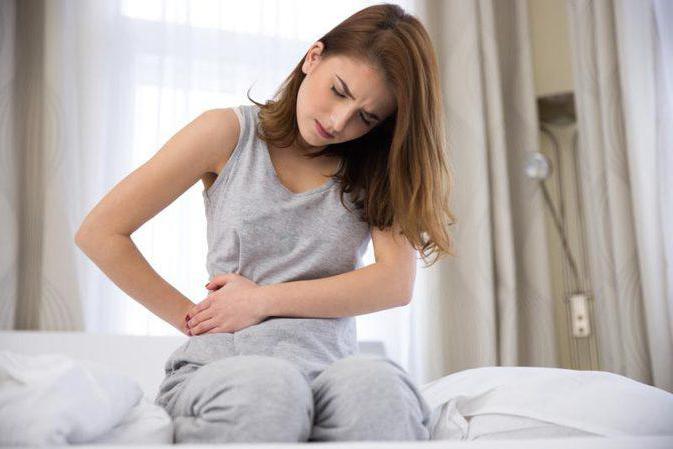
- Viral pathologies. Diseases such as tonsillitis and pneumonia can cause pain in the human body. If these ailments are present in the patient's body, then the pain in the stomach will last a short time, namely, about 3 days. In addition, the patient also has an upset stomach in the form of diarrhea. In this case, the pain sensations are aching and cutting in nature.
- Infections, the area of localization of which is bladder, pancreas and gallbladder. Pain sensations are intermittent aching in nature.
- An allergic reaction of the body can manifest itself in the form of pain in the stomach. This reaction of the body can cause certain foods. Pain lasts as long as the digestion of these products occurs. In this case, discomfort may be present in the form of spasms or severe indistinguishable pain.
- If a person is experiencing stress, then this condition can cause him pain in the stomach. Moreover, these discomforts can be accompanied by diarrhea and diarrhea.
- The same reaction of the body may be due to the fact that a person is experiencing fear. For example, before some important event.
Causes of pain
You should know that stomach pain can occur due to any pathology that occurs in the body. Its nature can also be different, from aching and dull sensations to acute and sharp forms of manifestation.
In addition, there is such a thing as hunger pains. They occur, as a rule, at night and appear when the person's stomach is empty.

What causes hunger pains? Why does my stomach hurt? The reasons may be as follows:
- The main one is that hydrochloric acid accumulates in the stomach in an amount that exceeds the norm.
- The presence of pathogenic bacteria.
- Gastrinoma. This is the name of the formation, the area of \u200b\u200blocalization of which is This formation is of a benign nature. Gastrinoma secretes gastric juice. It contains a large amount of hydrochloric acid.
- Wrong diet, namely, eating at night. Here we are talking about the constant violation of the hours of eating. Disposable will not cause pain in a person.
- The presence of malignant tumors in the body. You should be aware that they are prone to development at night.
How is the process of making a diagnosis for pain that is localized in the stomach?
When a person goes to a medical institution, the doctor listens to his complaints. An examination is necessary to make a diagnosis.
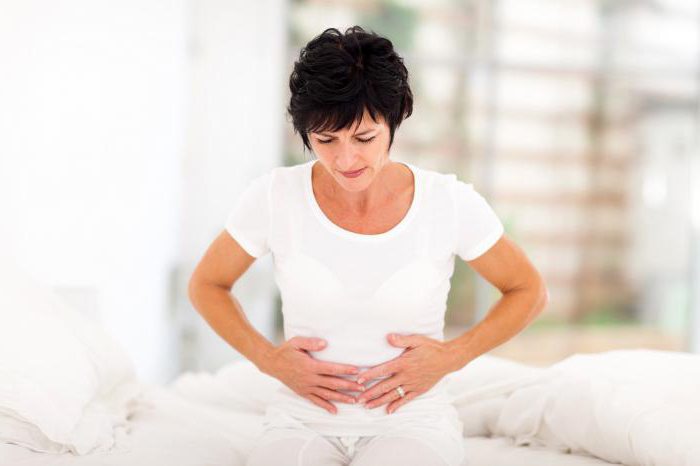
Stages of examination of the patient:
- First of all, the doctor makes a survey. He asks about the nature of the pains, when they appeared, what is their frequency and at what time of the day they disturb the patient. It also turns out whether they depend on the use of food or not.
- The patient is required to be referred for an ultrasound scan. Ultrasound examination digestive system will reveal whether the patient has pathological changes organs and tissues.
- Esogastroduodenography. This type of examination is not very pleasant. Since the patient will need to swallow a special device on which the camera is located. Through this method of examination, the doctor can see a picture of what is happening in the patient's stomach.
- MRI. To date, this research method is considered the most effective for diagnosis. CT scan allows a patient to be diagnosed with high accuracy. Since the results of the examination will show all the pathological changes that are present in the body. This method is considered the most expensive. But if there is an opportunity to use it, then you should definitely do it. It should also be said that MRI does not require special preparation from the patient.
Watch yourself!
We have already found out where the stomach hurts and why. Now we will give advice in case of arising problems.
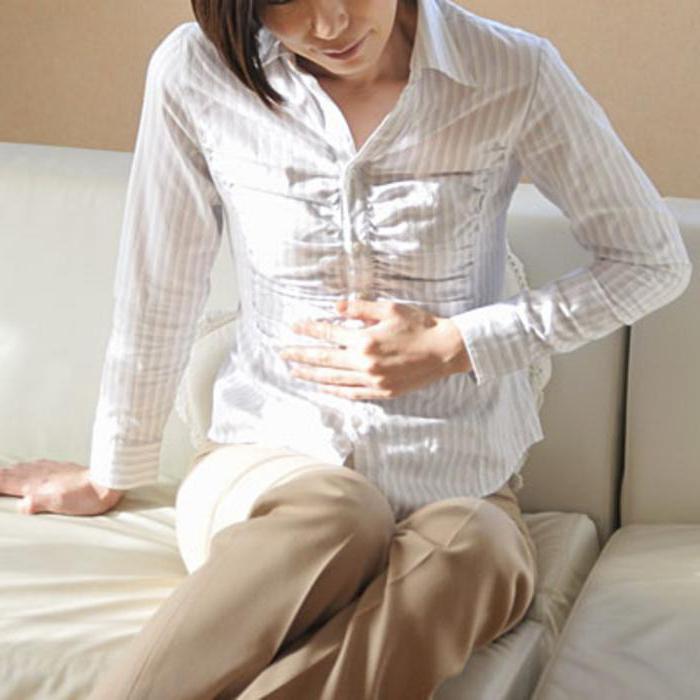
A person who experiences discomfort in the stomach area is recommended to observe their well-being on their own. Namely, during the week to fix at what time and under what circumstances the pain occurs.
You should also remember or write down the nature of pain. Namely, dull or sharp pain is present in a person. You also need to remember how long it has been present in the human body, repeats or not, and so on. If the patient provides the doctor with such a description of his feelings, then he can make a diagnosis based on these data.

You should also pay attention to factors that can trigger pain, such as sneezing or taking a deep breath.
If the pain is spastic in nature, then a person can take antispasmodics. They will take the pain away. However, it is worth remembering that such treatment has a temporary and emergency effect.
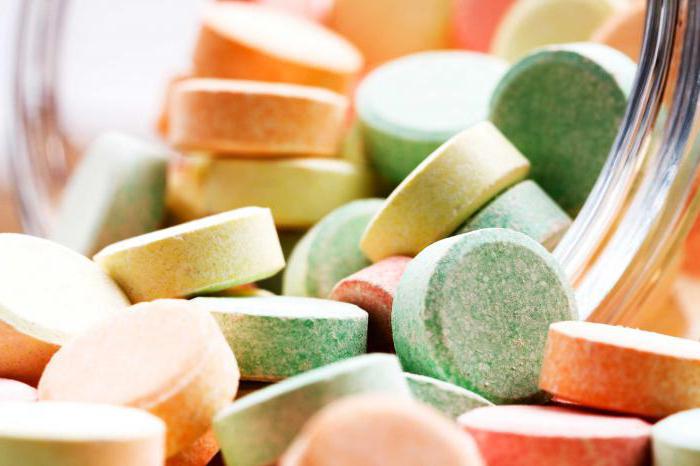
In order to completely get rid of pain, you should identify the cause of its occurrence. Also, do not self-medicate. What is good for one person may be dangerous for another. Therefore, the treatment regimen should be prescribed by the doctor after examining the patient.
Nutrition
For pain with localization in the stomach, you need to monitor your diet and limit yourself from part of the food. Stick to the following guidelines:
- You can consume dairy products with low fat content.
- It is worth giving up fatty meat.
- Also remove canned, pickled and salty foods from the menu. This category of products can cause discomfort in people with a healthy stomach. And for those who have pathological abnormalities, pickles will cause pain and deterioration.
- Never eat before bed. If the feeling of hunger is strong, then it is recommended to drink a glass of milk with the addition of honey.
- It is better to go on a diet. This includes cereals, soups, steamed food.
Conclusion
Now you know where the stomach is and how it hurts. Treatment of any ailments associated with this organ should be under the supervision of a doctor.
When contacting a medical institution, the doctor will make an accurate diagnosis and prescribe a treatment regimen. If the patient follows all the recommendations, he will soon recover.
Many patients are concerned about the question of how to treat the stomach at home? However, before starting treatment, it is necessary to identify the location of the pain, its nature and intensity. This can only be done by a doctor who, having collected all the necessary information, will determine the disease that causes an unpleasant symptom, and will provide the patient with needed help. Treatment of the stomach at home can be carried out in a complex - medicines and folk remedies. Diet also plays a big role.
Causes
A sharp pain under the ribs on the left side may indicate various ailments of the digestive system. Medicine highlights stomach pain as a symptom of the following conditions:
- malignant formations;
- ulcerative lesion of the duodenum;
- acute gastritis;
- ulcer and;
- erosive, atrophic gastritis;
- pancreatitis.
However, these are not all causes of gastric discomfort. Often, burning and pain are disturbed after a heavy meal, eating excessively spicy or fatty foods, with food allergies, or as a result of strong emotional overstrain. An important cause of problems with the body is smoking, as well as alcohol abuse. Pain in the stomach can also be caused by trauma to the abdominal organs, as well as constipation or appendicitis.
First aid
If the patient is overtaken by severe pain in the stomach, he should take the following immediate actions that can alleviate the condition:
- take a supine position;
- remove tight clothing and belt;
- drink half a glass of mineral water without gas;
- during the first time to refrain from junk food;
- cleanse the intestines and relieve tension.
Shouldn't endure severe pain, as they may indicate the presence of gastritis, ulcers and other serious ailments of the gastrointestinal tract. Therefore, you need to call a doctor or contact him yourself.
How to take medication
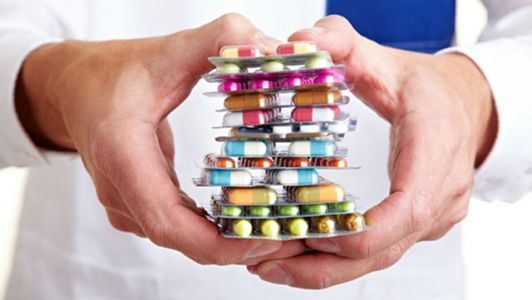 The most common question among people suffering from soreness of the digestive system: what to take for stomach pain at home? Pharmacy chains offer many medicines that help when the stomach hurts. They are divided into the following types:
The most common question among people suffering from soreness of the digestive system: what to take for stomach pain at home? Pharmacy chains offer many medicines that help when the stomach hurts. They are divided into the following types:
- medicines used in the treatment of duodenal ulcers and stomach;
- enzymes that improve digestion;
- antienzymatic agents used in the treatment of the inflammatory process of the pancreas.
Thus, with ulcers and gastritis, the doctor may prescribe the following names of tablets:
- "Maalox";
- "Almagel";
- "Flakarbin";
- "Gastal";
- "Gastrofarm";
- "De-nol";
- "Gastal".
You can relieve pain in the stomach and spasms with the drug "No-shpa". If there were errors in nutrition, a drug such as Omeprazole will remove an unpleasant symptom. When overeating, the drugs Gastromax and Cimetidine will help better. Tablets "Omez", "Controllock" can anesthetize with an ulcer and inflammation of the esophagus. The tablets "Festal", "Creon", "Pancreatin", "Mezim", "Triferment" and others are able to soothe the stomach from pain caused by eating excessive amounts of food. How many tablets should be taken per day and for how long, the doctor decides individually depending on the disease.
Folk remedies
Before you start treating the stomach with folk remedies, you need to make sure that there are no allergic reaction to natural ingredients. Only after that it is allowed to start non-traditional therapy. With pain in the stomach, the following folk methods help:
- An effective remedy that is used when the stomach hurts is turmeric. Treatment with turmeric involves the daily use of 3 grams of the product for two months. Also from this plant, you can apply the following recipe, which helps with gastric diseases: pour a large spoonful of turmeric with a third part of a glass of boiling water, mix thoroughly, add to a glass of milk and add honey. Milk should be drunk warm before bed.
- Bay leaf will help to cope with painful discomfort in the digestive organ. To do this, pour seven bay leaves with a glass of water and put on fire to boil, salt and boil for 15 minutes after boiling. When the medicine from bay leaves has cooled, strain it through cheesecloth and drink two or three times.
- The pain passes after the use of marshmallow. To do this, you can make a medicinal syrup, which is based on marshmallow. It is necessary to grind two grams of the main ingredient, pour it with water and wine alcohol in a ratio of 1 g to 45 g, add 60 g of sugar and leave to infuse. It is necessary to drink marshmallow every two to three hours, two tablespoons. This folk medicine is effective for the treatment of stomach pain in children. Only in a children's recipe should mix marshmallow with fruit syrup. Children need to use syrup in a small spoon, diluted in half a glass of water, five times a day.
- You can remove an unpleasant symptom in the stomach with lemon juice. This effective remedy does not require much effort to prepare, just mix half a glass of water with two small spoons. lemon juice and a pinch of salt. Consume in the morning, afternoon and evening.
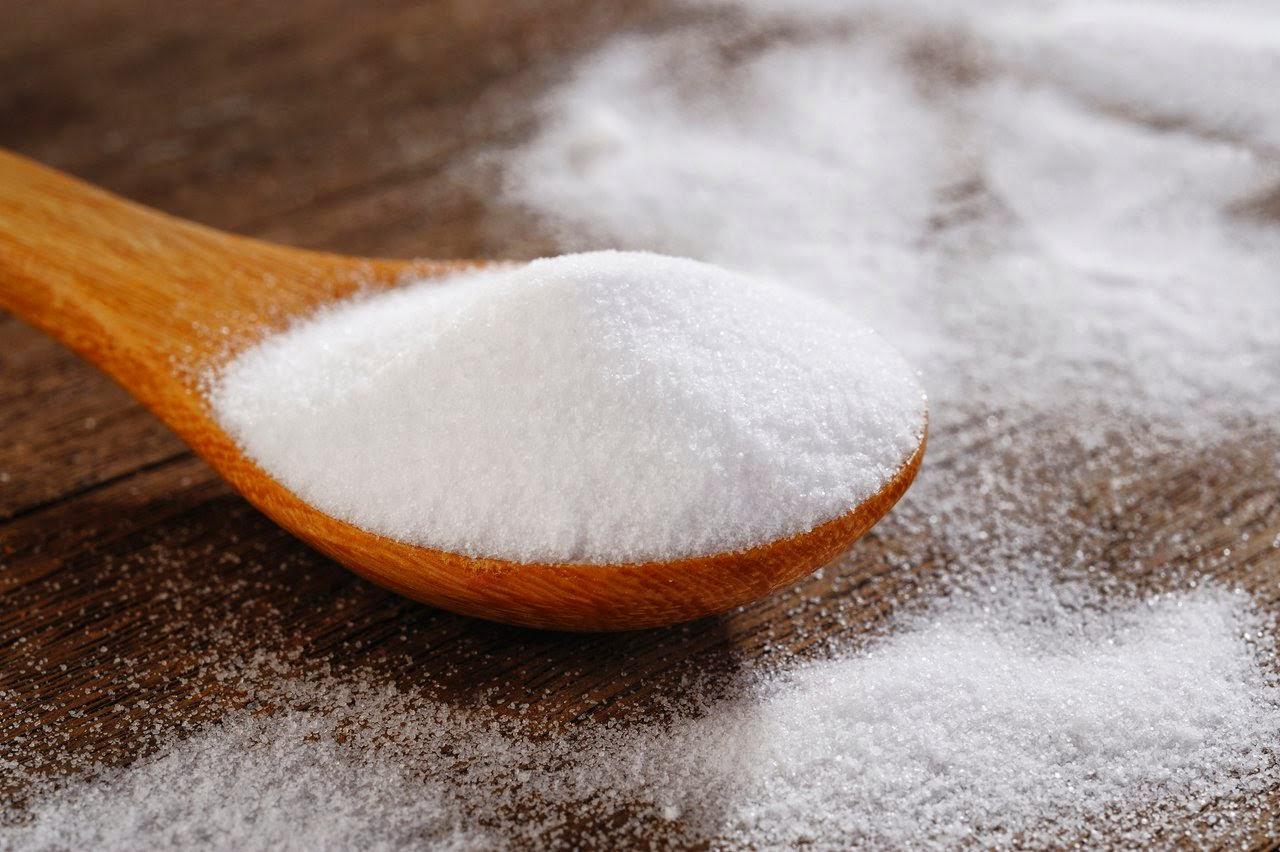 Salt treats intestinal disorders that are accompanied by pain in the stomach.
Salt treats intestinal disorders that are accompanied by pain in the stomach. Alternative medicine recipes for stomach pain are different, and in most cases depend on what disease caused them. For example, salt treats intestinal disorders that are accompanied by painful. To do this, dilute salt in the amount of half a teaspoon with 50 g of vodka. Drink the liquid in one gulp and immediately start eating. However, you should not abuse salt, and even more so vodka, if there are diseases of the gastrointestinal tract, because in this case it can only harm.
Treatment of folk remedies for acute and sharp pain in the abdomen may include bowel cleansing. Cleanse with lemon and castor oil. To do this, you need to collect castor oil in a separate bowl at the rate of: one drop of castor fluid per 1 kg of body weight. Next - add lemon to the castor cleanser for bowel cleansing in a ratio of 1: 2, warm it up and drink it with juice.
When the stomach hurts due to constipation or a disease such as gastritis, doctors may recommend sunflower and olive oils. Sunflower is able to envelop the walls of the stomach and protect its mucous membrane. Due to this property, a sunflower product can be used to treat duodenal ulcers. To do this, you should use a tablespoon of sunflower remedy every day on an empty stomach.
 Drinking olive oil should be for 3 months daily, a small spoonful on an empty stomach.
Drinking olive oil should be for 3 months daily, a small spoonful on an empty stomach. From gastritis, it is effective to use olive oil. With this disease, it has a positive effect on the functioning of the digestive system and liver. Olive oil should be drunk daily for three months in a small spoonful on an empty stomach. Since the olive "food" has a specific smell and taste, with a sick stomach it is allowed to use it as a dressing for various dishes.
The organs of the digestive system are closely interconnected, and if the work of one of them is disrupted, this can negatively affect the functioning of others. Milk thistle can treat the digestive organs. Folk remedies based on milk thistle allow you to remove the focus of inflammation in the stomach, improve the functioning of the digestive system and restore the mucous membranes of the gastrointestinal tract. But this plant is best suited for the liver, violations in the work of which can lead to functional failures throughout the body, including in the work of the stomach.
A medicine used for liver problems and when the stomach hurts is prepared as follows: grind milk thistle seeds into powder, take 30 g and pour 0.5 liters of boiling water. Let it boil in a water bath until the amount of liquid is halved. Strain the broth and drink in a large spoon 60 minutes after the meal. The duration of therapy is one to two months - this is exactly as long as it takes to cure stomach pain for a long time.
You can quickly get rid of pain in the stomach with hydrogen peroxide. In order for the result of treatment with this remedy to be successful, the following rules must be observed:
- The initial dosage should be minimal. Start with one drop of a three percent solution, diluted in two tablespoons. It is necessary to use the liquid two to three times a day, the dosage is increased daily until the number of drops is equal to 10 at a time.
- Drinking hydrogen peroxide is not recommended on an empty stomach and earlier than two to three hours after a meal.
- Hydrogen peroxide should be taken in cycles, i.e. after a 10-day course, it is necessary to pause for five days and then resume the course with 10 drops.
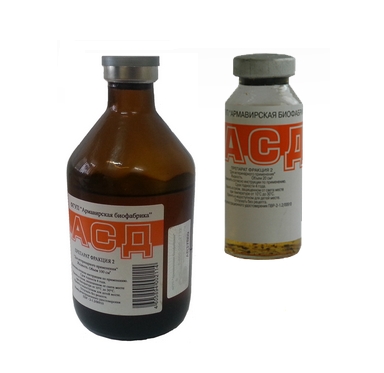 Dorogov's antiseptic stimulator (ASD).
Dorogov's antiseptic stimulator (ASD). Unconventional remedies for stomach pain are different. Surely few people know about such a medication as Dorogov's antiseptic stimulator (ASD). This medicine has a wide spectrum of activity and is able to treat various diseases. Often ASD is used to prevent tuberculosis, cancer, liver and heart ailments.
To reduce stomach pain, it is recommended to take ASD-2, which is diluted with water and taken in the morning and evening half an hour before meals. When using ASD, it is important to include a lot of protein foods in the diet. Doctors strongly recommend that after taking ASD for a spirit of hours, refrain from alcoholic beverages, tobacco and taking other medications. Start taking ASD with 5 drops in the morning and 10 drops in the evening on the first day. Every day the number of drops increases by 5, and on the 7th day a break is made. On an ongoing basis, it is recommended to take ASD 35 drops in the morning and at bedtime.
If the pain in the stomach does not go away after the use of medicinal and folk remedies, then you should resort to other methods of treating gastric diseases. Attention should be paid to the psycho-emotional state of the patient, because constant stress, irritability and nervousness are often the culprits of various stomach ailments, for example, a “nervous” ulcer. For treatment, valerian is used, and prevention is also carried out. Valerian is used in the form of an infusion: you need to take two teaspoons of crushed dried roots and pour them with a glass of water. Boil for a minute and leave to infuse for 60 minutes. The remedy from valerian must be filtered and drunk three times a day after meals.
Honey and propolis
You can treat stomach pain in the following way: dilute a tablespoon of honey in a glass of water and consume 30-60 minutes before meals. An excellent method of dealing with frequent stomach pains is to use folk remedies from propolis. It is melted in cream in a ratio of 1:10 and heated over a fire. The filtered liquid should be consumed one hour before a meal, mixed with 50 ml of milk.
Herbs
Various herbs will relieve stomach pains, it is better to drink them for prevention. An herb such as celandine is capable of anesthetizing the stomach. A teaspoon of the plant is poured with half a liter of boiling water and infused for 45 minutes. The liquid is filtered and consumed 130 ml 30 minutes before meals. You can treat the stomach with a remedy based on St. John's wort. Pour boiling water over a spoonful of grass, and after 40 minutes drink (a tablespoon throughout the day). St. John's wort has an anti-inflammatory effect, so it will quickly reduce stomach pain.
Rosehip is able to cure frequent pain in the stomach. It is prepared as follows: pour a tablespoon with a glass of boiling water and boil for several minutes. When the liquid has cooled, honey is added to it and consumed during meals. Flax seeds, medicines based on psyllium leaves and other herbs can soothe stomach pains.
Juices
Juices made from cabbage, plantain and potatoes can alleviate stomach pain. Juices should be made immediately before use. Potato juice is taken 20 minutes before a meal, 80 ml each, cabbage juice - an hour before a meal, previously diluted with water, and plantain juice - before each meal and at bedtime, 30 ml each.
Tinctures
From pain in the stomach, you can make various tinctures based on the following plants:
- Carnation. Anti-inflammatory and analgesic effect has a tincture, which is based on cloves. To prepare it, you need to pour 50 g of grass with half a liter of vodka and leave to infuse for 10 days. Take a tincture of cloves - 7 drops three times a day.
- Air. You can reduce pain, discomfort in the intestines and stomach with calamus. It is prepared as follows: 80 g of calamus roots are poured with a liter of vodka and left to infuse in a dark place for 3 days. Use a tincture of calamus - a tablespoon, diluted in water, three times a day.
Washing
If stomach pain causes poisoning, then you can do a bowel cleansing by washing it. Purification can be carried out by the following means:
- boiled water;
- soda solution;
- potassium permanganate;
- salt solution.
Diet
Proper nutrition plays an important role in the treatment of stomach pain. In case of stomach ailments, it is important to abandon fatty, salty and overly peppery foods. The menu should be dominated by light vegetable broths, as well as soups from lean meats and fish.
You should reduce the consumption of sweets, muffins, as well as strong tea and coffee. Only when complex treatment with the observance of all the doctor's recommendations, you can easily relieve the pain in the stomach.
